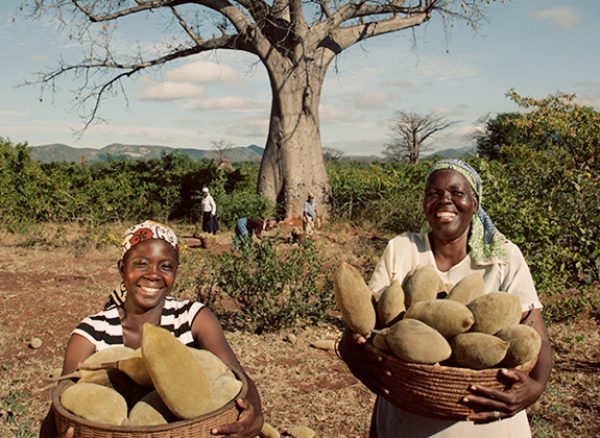By Nita Karume :
The African baobab is a remarkable species in the special way it grows multiple fused stems. This is in addition to its long lifespan. Furthermore, the oldest baobab tree from research analysis was found to be 2 500 years old.
Nutrition
Baobab trees have well over 200 uses. The leaves, for instance, can be boiled and eaten like kale or spinach. Furthermore, the seeds once roasted make a more nutritious and worthwhile coffee substitute. The same seeds are also used to make oil for cooking or cosmetics. Moreover, the fruit pulp has six times more vitamin C than oranges, making it an important nutritional supplement in Africa and in the European, US and Canadian markets.
Locally, fruit pulp is made into juice, jam, or fermented to make beer. The young seedlings have a taproot which can be eaten like a carrot. The flowers are also edible. The roots can be used to make red dye, and the bark to make ropes and baskets.
Ecological benefits
Aside from having medicinal properties, baobab’s hollow trunks can be used to store water. In addition, the baobab crowns also provide shade. Many communities thus take advantage of this feature to trade under the trees. Baobab trees form key ecosystem elements in the dry African savannas. Importantly, baobab trees keep soil conditions humid, favor nutrient recycling and avoid soil erosion.
Wildlife conservation
Baobab trees act as an important source of food, water and shelter for a wide range of animals which feed on their bark to provide some moisture during drought. Pollination of the flowers is done by bats which have been proven to travel long distances to feed on their nectar. Numerous insects also live on the baobab tree.
Baobab trees can be cultivated. Some communities in West Africa have been doing this for decades. Furthermore, recent research has shown that grafting the branches of fruiting trees to seedlings shortens the fruition of the trees to five years. This comes as a relief to farmers who were once discouraged owing to the fact that baobab trees can take 15-20 years to fruit.
As any other indigenous tree species, the baobab shows great variation in nutritional properties. However, it takes years of research and selection to find the best varieties for cultivation; often in a process referred to as domestication. This involves the selection and cultivation of the best trees of those available in nature. It is a process that is time consuming as selection of the best trees is not straightforward. Unfortunately this serves as a disadvantage since the trees continue to die throughout the process.
According to reports, approximately nine of 13 of Africa’s oldest and largest baobab trees have died in the past decade. These trees, aged between 1 100 and 2 500 years, are reportedly victims of climate change. According to scientists, the harsh climate changes have made the tree susceptible to prevailing unstable weather conditions.
There are nine species of baobab trees in the world: one in mainland Africa, Adansonia digitata which is known to have the ability to grow to the largest size and oldest age, six in Madagascar, and one in Australia.








